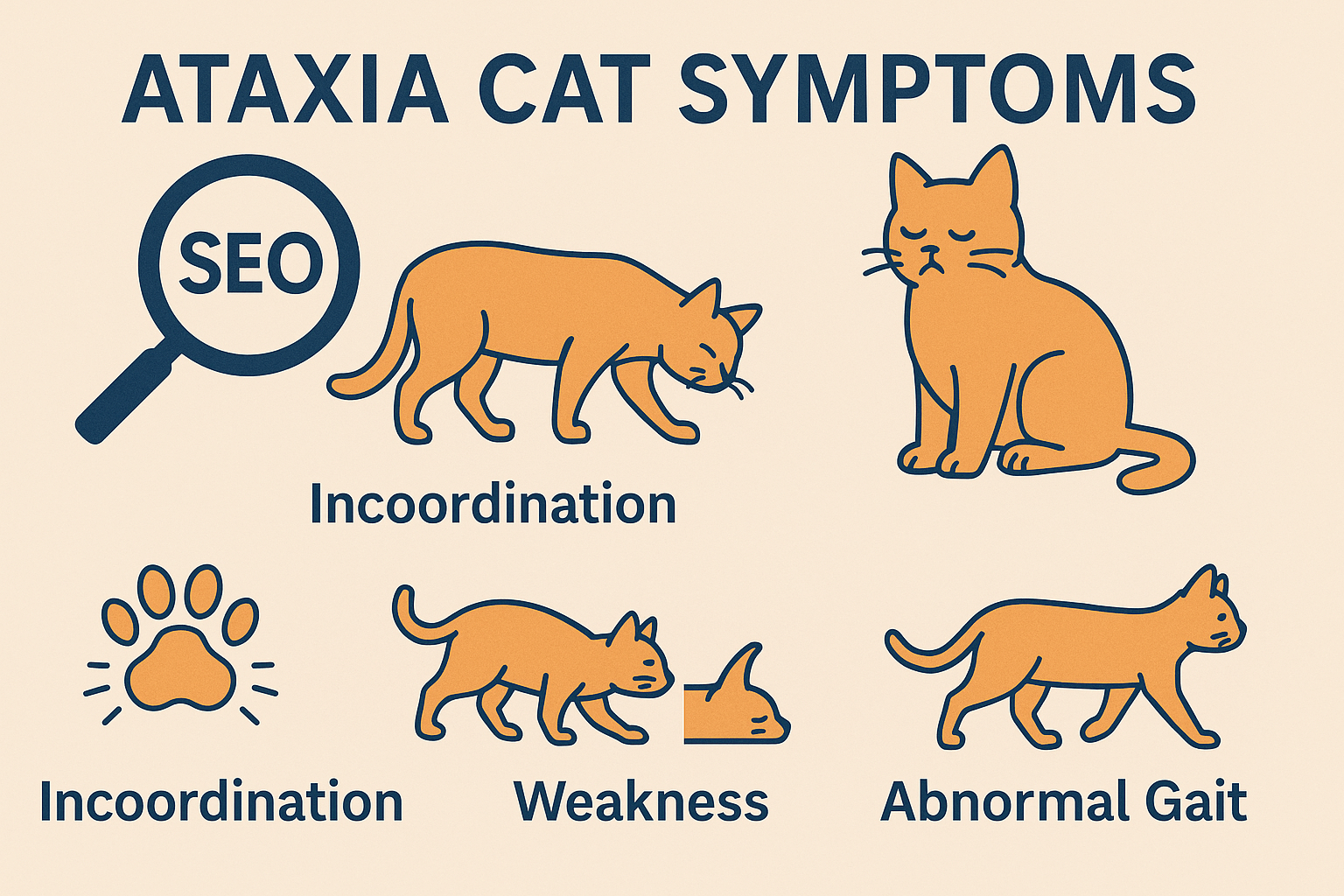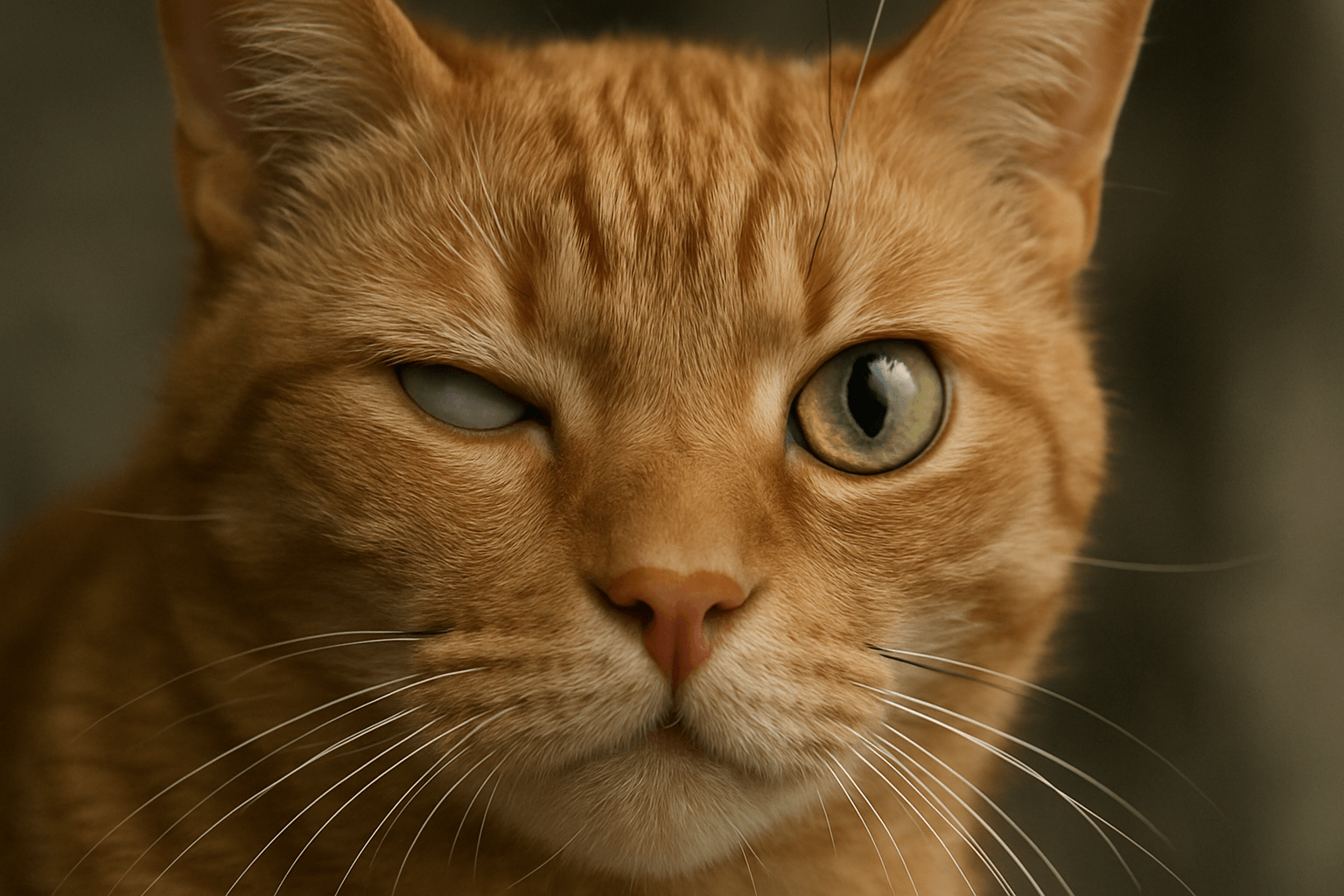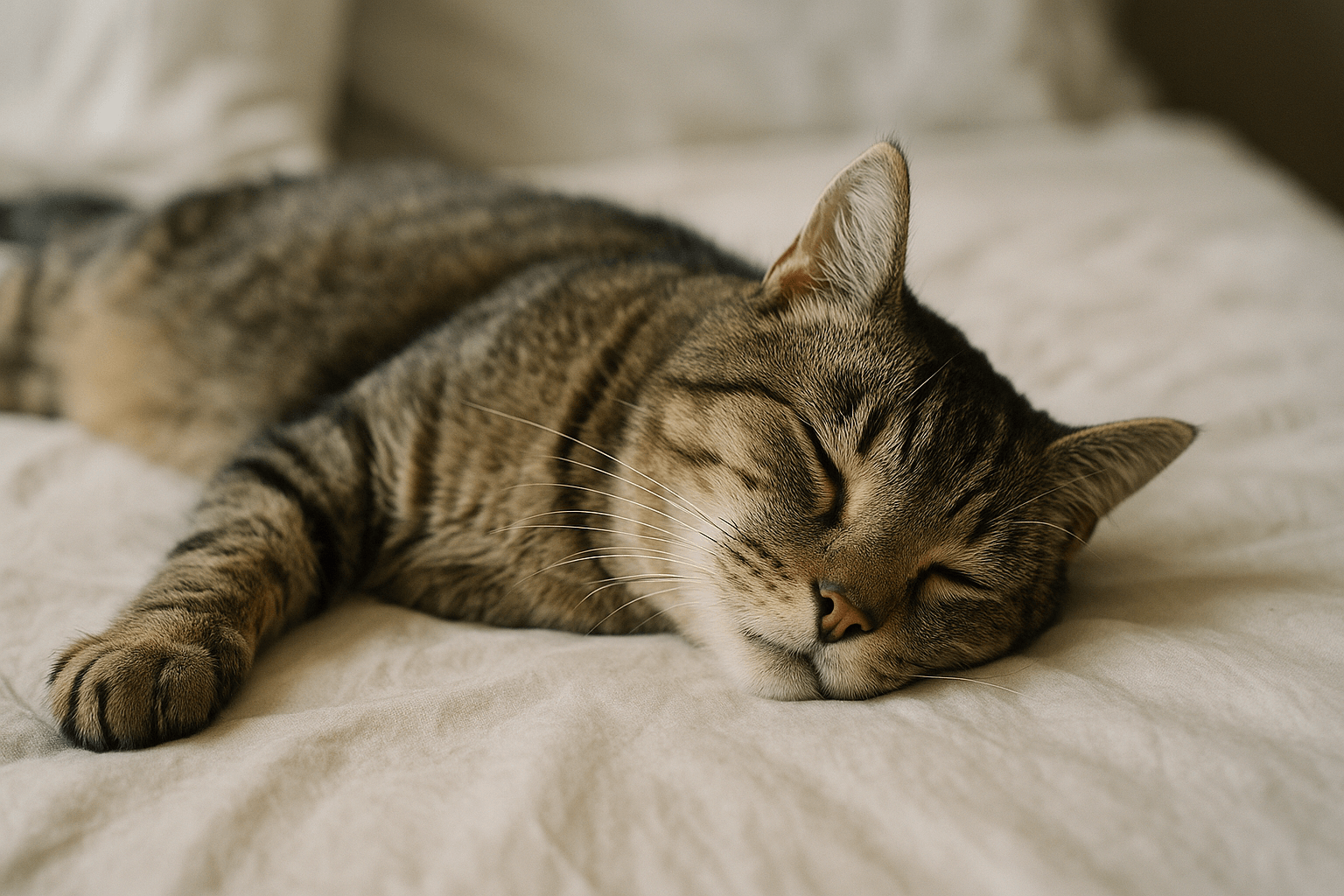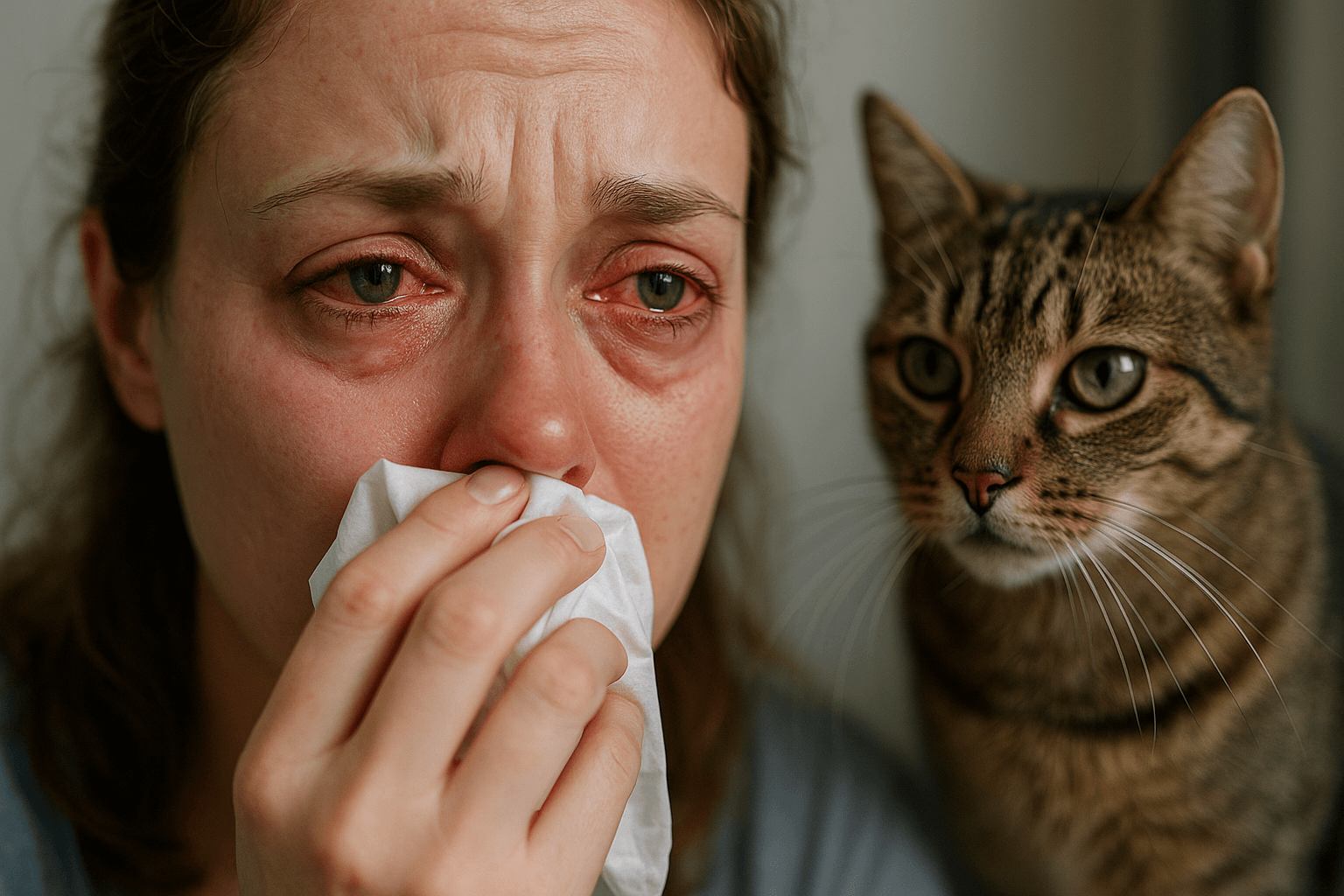Ataxia in Cats: Recognizing the Symptoms and Seeking Help
Ataxia in cats refers to a neurological condition characterized by a lack of coordination, balance issues, and abnormal movements. While it might be alarming to witness your feline companion struggling to walk or move normally, understanding the symptoms and potential causes can help you take swift action. Ataxia can stem from various underlying conditions, ranging from infections to genetic disorders, and early detection is key to managing your cat’s health. In this blog post, we’ll explore the signs of ataxia, possible triggers, and steps you can take to support your furry friend through diagnosis and treatment.
Expert Insight on Ataxia and Ear Infections
“Ear infections can be treated, but there are numerous products that can be dangerous and make the condition worse. Ataxia caused by trauma also completely depends on the area of the body that is injured, the type of injury, and the severity.”
Common Symptoms of Ataxia in Cats
Recognizing ataxia symptoms early can make a significant difference in your cat’s prognosis. These signs often manifest in changes to movement, posture, and behavior.
Unsteady Gait:
Cats with ataxia may appear wobbly or uncoordinated when walking, as if they’re struggling to maintain balance.Head Tilting:
A persistent head tilt is a common symptom, indicating potential issues with the inner ear or brainstem.Difficulty Standing or Walking:
Some cats may struggle to stand up or walk without falling over, even on flat surfaces.Abnormal Eye Movements:
Rapid, involuntary eye movements (nystagmus) can accompany ataxia and signal a neurological issue.Lethargy or Weakness:
Cats may exhibit reduced energy levels or muscle weakness, making them less active than usual.
If you notice any of these symptoms, it’s important to consult a veterinarian promptly to determine the underlying cause and begin appropriate treatment.

Potential Causes of Ataxia in Cats
Ataxia can arise from a variety of medical conditions, each requiring specific diagnostic approaches and treatments. Understanding the possible causes helps veterinarians narrow down the root of the problem.
Ear Infections:
Inner or middle ear infections can disrupt balance and lead to vestibular ataxia, affecting coordination.Trauma or Injury:
Head injuries or spinal damage may result in sudden onset ataxia due to nerve damage.Toxic Exposure:
Ingesting toxic substances like certain plants, medications, or chemicals can trigger neurological symptoms.Genetic Disorders:
Some breeds are predisposed to inherited conditions that cause progressive ataxia over time.Infectious Diseases:
Viral or bacterial infections, such as feline infectious peritonitis (FIP), can impact the nervous system.
Identifying the underlying cause is crucial for effective management and improving your cat’s quality of life.
Check this guide 👉Understanding Cat Brain Scans: Best 7 Health Tips!
Check this guide 👉Understanding Neurological Disorders in Cats: Best 7 Tips!
Check this guide 👉Understanding Cat Seizures: Best 7 Expert Tips!
Types of Ataxia | Key Characteristics |
|---|---|
Vestibular Ataxia | Affects balance; often includes head tilting |
Cerebellar Ataxia | Impairs fine motor skills; wobbly movements |
Sensory Ataxia | Loss of spatial awareness; stumbling gait |
Acquired Ataxia | Caused by injury, infection, or toxins |
Congenital/Hereditary Ataxia | Present from birth; progressive over time |
Diagnosing Ataxia in Cats
Diagnosing ataxia involves a comprehensive evaluation to pinpoint the underlying cause. Veterinarians use various tools and techniques to gather information about your cat’s condition.
Physical Examination:
The vet will assess your cat’s gait, posture, and reflexes to identify abnormalities.Neurological Tests:
Specific tests evaluate nerve function and help localize the affected area of the nervous system.Blood Work and Urinalysis:
These tests check for systemic issues, such as infections or metabolic imbalances.Imaging Studies:
X-rays, MRIs, or CT scans provide detailed images of the brain, spine, or ears to detect structural problems.Ear Swabs or Cultures:
If an ear infection is suspected, samples may be taken to identify the causative agent.
A thorough diagnostic process ensures accurate identification of the root cause, guiding effective treatment strategies.
Managing Ataxia in Cats: Treatment Options
While ataxia itself cannot always be cured, managing its symptoms and addressing the underlying cause can significantly improve your cat’s well-being.
Medications:
Antibiotics, anti-inflammatory drugs, or antivirals may be prescribed depending on the diagnosis.Supportive Care:
Providing soft bedding, easy-to-reach food bowls, and a safe environment minimizes stress and prevents injury.Physical Therapy:
Gentle exercises can help strengthen muscles and improve coordination over time.Dietary Adjustments:
Nutritional supplements or specialized diets may support overall health and recovery.Monitoring Progress:
Regular follow-ups with the vet ensure the treatment plan remains effective and adjustments are made as needed.
With proper care and attention, many cats with ataxia can live comfortably despite their condition.
Preventive Measures to Reduce Risk of Ataxia
Taking proactive steps can help minimize the risk of ataxia or catch it early in some cases. Prevention and vigilance are key to safeguarding your cat’s health.
Regular Vet Check-Ups:
Routine visits allow early detection of potential issues before they escalate.Safe Environment:
Minimize hazards in your home to prevent injuries that could lead to ataxia.Balanced Diet:
Ensure your cat receives proper nutrition to support brain and nervous system health.Vaccinations and Parasite Control:
Protect your cat against infectious diseases that could affect the nervous system.Avoid Toxic Substances:
Keep harmful chemicals, plants, and medications out of reach to prevent poisoning.
By prioritizing prevention, you can reduce the likelihood of ataxia and promote long-term well-being.
Breeds Predisposed to Hereditary Ataxia
Certain cat breeds are more susceptible to hereditary forms of ataxia, which are often progressive and incurable. Awareness of these predispositions can aid in early intervention.
Maine Coon:
Known for developing cerebellar hypoplasia, a condition affecting coordination.Siamese Cats:
May inherit sensory ataxia linked to genetic mutations.Scottish Fold:
Prone to skeletal abnormalities that can contribute to mobility issues.Persian Cats:
Susceptible to polycystic kidney disease, which can indirectly impact neurological health.Burmese Cats:
Have been reported to develop congenital tremors associated with ataxia.
Understanding breed-specific risks allows owners to monitor their cats closely and seek timely veterinary advice.
Emotional Support for Owners of Cats with Ataxia
Caring for a cat with ataxia can be emotionally challenging, but finding ways to cope ensures you stay strong for your pet. Here are some tips to support yourself during this journey.
Join Support Groups:
Connect with other cat owners facing similar challenges to share experiences and advice.Educate Yourself:
Learning about ataxia empowers you to make informed decisions about your cat’s care.Celebrate Small Wins:
Focus on progress, no matter how minor, to maintain a positive outlook.Seek Professional Guidance:
Consult behavioral specialists or counselors if you need additional emotional support.Practice Self-Care:
Take breaks and prioritize your own well-being to remain resilient and present for your cat.
By nurturing your emotional health, you can continue providing the best care for your beloved companion.
Frequently Asked Questions About Ataxia in Cats
What should I do if my cat shows signs of ataxia?
Contact your veterinarian immediately for a thorough examination to determine the cause.
Can ataxia be cured?
It depends on the underlying cause—some cases can be managed effectively, while others may require ongoing care.
Is ataxia painful for cats?
Ataxia itself is not typically painful, but the underlying condition may cause discomfort.
How long does it take to diagnose ataxia?
Diagnosis timelines vary based on the complexity of the case and required tests, ranging from days to weeks.
Can kittens outgrow ataxia?
Some kittens with developmental issues may improve as they mature, but congenital cases often persist.
Caring for a Cat with Ataxia: Compassion and Commitment
Ataxia in cats can be a daunting diagnosis, but with the right approach, you can provide your feline companion with a fulfilling and comfortable life. By recognizing the symptoms early, seeking professional help, and implementing a tailored care plan, you play a vital role in supporting their health and happiness. Remember, your love and dedication make all the difference in helping your cat adapt to their unique challenges. Together, you can navigate this journey with patience and compassion.
Why Is My Cats Second Eyelid Showing? Best 7 Expert Tips! Understand causes, health signs, and how to respond when your cat’s third eyelid becomes visible.
How Do I Know If My Cat Died Peacefully? Best 7 Expert Tips! Discover the quiet signs of a peaceful feline passing and find comfort in their final moments.
Cat Allergy Eyes: Best 7 Expert Tips! Discover why your eyes react to cats and learn proven strategies for relief—without giving up your feline friend.
Why Do Abyssinian Cat Colors Matter? Best 7 Expert Tips! Discover the genetics, rare hues, and care secrets behind Abyssinian coat colors for a healthier, happier cat.





